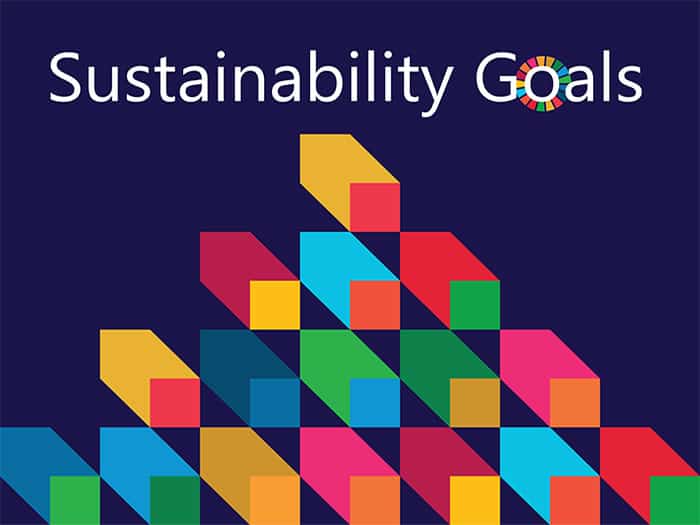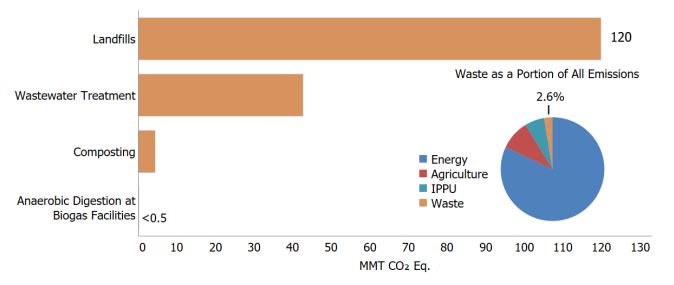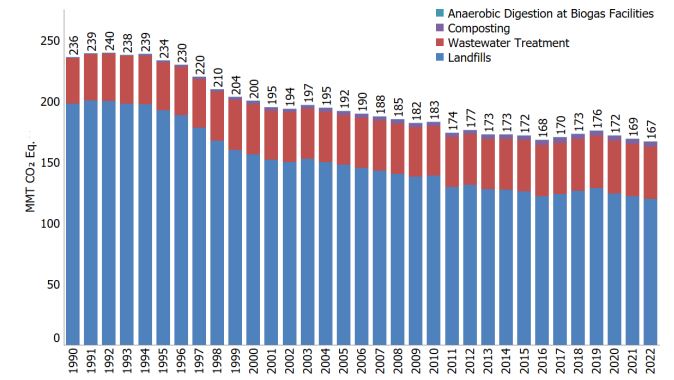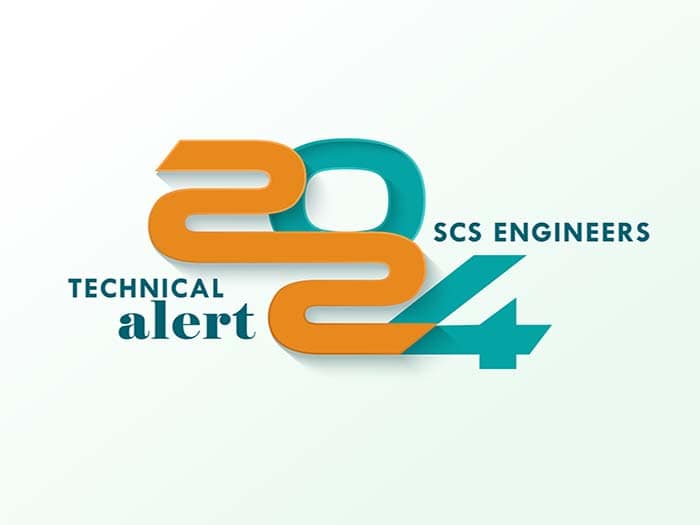

The U.S. Environmental Protection Agency (EPA) Region 9 and the CA Department of Toxic Substances Control’s (DTSC) Office of Brownfields in collaboration with the Center for Creative Land Recycling will host the California Land Recycling Conference (CALRC): From the Ground Up, this September 17-19 at the Carson Event Center in Carson, CA. Come visit SCS Engineers, an exhibitor and sponsor at this leading Conference. CALRC is the premier event for community, municipal, and redevelopment professionals focused on the beneficial reuse of underutilized and contaminated properties. With unprecedented resources to address brownfield cleanup and reuse challenges, CALRC provides the tools, training, and connections you need to create and capitalize on opportunities for revitalization. This conference will spotlight the passion driving redevelopment projects, showcase the partnerships created, and help practitioners gain valuable insights into available funding opportunities that support these transformative programs. SCS can provide support for a variety of land use and brownfield redevelopment services, including:
Find out more information about this Conference or to register!
We are excited to announce that SCS Engineers will be sponsoring and exhibiting at the Center for Creative Land Recycling (CCLR) Arizona Brownfield Workshops this April 23rd, 24th, and 25th in collaboration with the Environmental Protection Agency (EPA). Our very own Iain Olness will be a panelist and Eric Williams will moderate a panel. Similar content will be presented at all workshops, so choose the date and location most convenient to you! SCS can provide support for a variety of land use and brownfield redevelopment services, including:
Register now for any or all of these workshops!

On April 11, 2024, the U.S. Environmental Protection Agency (EPA) released its annual Inventory of U.S. Greenhouse Gas Emissions and Sinks (GHG Inventory), presenting a national-level overview of annual greenhouse gas emissions from 1990 to 2022.
The GHG inventory identifies and quantifies anthropogenic sources and sinks of greenhouse gas emissions and removals, which is essential for quantifying and qualifying data used to address climate change and measure the impact of environmental solutions and sustainability plans. In this context, the term “anthropogenic” refers to greenhouse gas emissions and removals that are a direct result of human activities or are the result of natural processes that have been affected by human activities.
The GHG Inventory covers seven key greenhouse gases: carbon dioxide, methane, nitrous oxide, hydrofluorocarbons, perfluorocarbons, sulfur hexafluoride, and nitrogen trifluoride. In addition to tracking U.S. greenhouse gas emissions, the Inventory calculates carbon dioxide removed from the atmosphere through carbon uptake in forests and other vegetation.

Greenhouse gases are emitted and reported across five economic sectors: transportation, electric power (electricity generation), residential/commercial (homes and businesses), industry, and agriculture. Emissions from commercial/residential and industrial activities account for a much larger share of U.S. greenhouse gas due to their proportionately larger share of electricity use in these sectors (e.g., heating, ventilation, and air conditioning; lighting; appliances; powering industrial machinery).

Transportation activities were the largest source (28 percent) of total U.S. greenhouse gas emissions in 2022. From 1990 to 2022, transportation CO2 emissions from fossil fuel combustion increased by 19 percent, largely due to increased travel demand.
The electric power sector accounted for 25 percent of U.S. greenhouse gas emissions in 2022. Emissions from this sector have decreased by approximately 16 percent since 1990, and the carbon intensity of the sector, in terms of emissions (CO2 Eq.) per QBtu input, has decreased by 28 percent. Total electric power generation increased by 3 percent in 2022, while electric power-related emissions decreased by less than 1 percent due in part to a decrease in coal consumed to produce electricity and an increase in renewable generation.
The commercial and residential sectors accounted for 7 and 6 percent, respectively, of total U.S. greenhouse gas emissions in 2022, excluding indirect emissions from electricity end-use. Emissions from these sectors are primarily from building-related activities such as heating and cooking and have increased since 1990. Emissions from commercial and residential buildings also increase substantially when emissions from electricity end-use are included because the building sector uses 75 percent of the electricity generated in the U.S. for heating, ventilation, air conditioning, lighting, and appliances (NREL 2023). Total residential and commercial greenhouse gas emissions, including direct and indirect emissions, have decreased by 1 percent since 1990.
The industrial sector accounted for 23 percent of U.S. greenhouse gas emissions in 2022, excluding indirect emissions from electricity end-use. If indirect emissions from electricity use are distributed to the industrial end-use sector (e.g., powering equipment and industrial buildings), industrial activities account for 30 percent of U.S. greenhouse gas emissions. Since 1990, emissions from industry have declined by 16 percent. Shifts in industrial output away from energy-intensive manufacturing products to less energy-intensive products have had a significant positive impact on industrial emissions.
Agriculture accounted for about 10 percent of U.S. greenhouse gas emissions in 2022 and includes sources such as livestock enteric fermentation and manure management, N2O emitted from managed agricultural soils from fertilizers and other management practices, and fossil fuel combustion from agricultural equipment. Indirect emissions from electricity in the agricultural sector are about 5 percent of sector emissions. In 2022, agricultural soil management was the largest source of N2O emissions, and enteric fermentation was the largest source of CH4 emissions in the U.S. There are several strategies for reducing CH4 emissions from enteric fermentation and manure management, including anaerobic digestion and liquid-solid separation, which the sector is embracing.
A summary of greenhouse gas emissions from the Waste sub-sector is below. In 2022, waste activities generated emissions of 166.9 MMT CO2 Eq., or 2.6 percent of total U.S. greenhouse gas emissions.


Methane generation and emissions from landfills are a function of several factors. Each landfill has unique characteristics, but emissions from MSW landfills accounted for approximately 84 percent of total landfill emissions (100.9 MMT CO2 Eq.), while industrial waste landfills accounted for the remainder (18.9 MMT CO2 Eq.). Nationally, there are significantly fewer industrial waste landfills than MSW landfills, contributing to the lower national estimate of CH4 emissions for industrial waste landfills.
The annual amount of MSW generated and disposed of in MSW landfills varies annually and depends on several factors (e.g., the economy, consumer patterns, recycling, composting programs, and inclusion in a garbage collection service).
The estimated annual quantity of waste placed in MSW landfills increased by 10 percent from approximately 205 MMT in 1990 to 226 MMT in 2000, then decreased by 11 percent to 202 MMT in 2010, and then increased by 7 percent to approximately 217 MMT in 2022.
Emissions decreased between 1990 and 2022 largely because of increased use of landfill gas collection and control systems, closure of older landfills, better management practices, and increased organics diversion through state and local policy and regulations.
Biogas, Anaerobic Digestion, Renewable Natural Gas and Energy Systems
Carbon Sequestration & Deep Well Injection
CCR and Electric Utilities
Clean Air Act
Facility Energy Management
Greenhouse Gas Monitoring, Control, Inventory
Landfill Gas and LFGE
Liquids Management – Wastewater and Leachate
Material Recovery Facilities and Transfer Stations
Oil and Gas Exploration and Production
Organics Management, Composting
SCS Remote Monitoring and Control® (Emissions Tracking)
SCSeTools® (LFG Tracking)
Solid Waste Planning, Sustainable Materials Management
Sustainable Solutions Planning
Carolinas Air Pollution Control Association (CAPCA) is hosting its 2024 Spring Meeting at the historic Omni Grove Park Inn in Asheville, North Carolina. CAPCA is a forum for over 600 members to share perspectives on air pollution control across the Carolinas. This year’s Spring Meeting features updates on regulations and enforcement, specialty workshops on testing and monitoring procedures, door prizes, and giveaways. This year’s exhibitor social, “The Great Outdoors,” invites attendees to wear their favorite gear for a fun gathering with fellow outdoor enthusiasts.
The event is open to CAPCA members and their guests. Register onsite!

EPA is issuing a new Clean Water Act (CWA) rule that requires certain facilities to prepare and implement facility response plans (FRP) that address the storage and worst-case discharge of hazardous substances (HSs).
According to the EPA, the facility response plan requirements apply to facilities that could reasonably be expected to cause substantial environmental harm based on their location. These include facilities with a maximum onsite quantity of a CWA hazardous substance that meets or exceeds threshold quantities, located within a 0.5-mile radius of navigable water or conveyance to navigable water, and meets one or more substantial harm criteria.
From EPA’s site: See CWA Hazardous Substance Facility Response Plan Applicability.
Facilities may be identified as posing substantial harm either through a self-identification process or a process whereby EPA Regional Administrators may assess facilities on a case-by-case basis and, if appropriate, require a facility to develop a response plan based on, among other things, concerns related to potential impacts of a worst-case discharge on communities with environmental justice concerns.
The CWA hazardous substance FRP requirements apply to facilities that:
EPA estimates that the rule will impact 12,618 facilities, including 7,264 estimated for rule familiarization and the Substantial Harm Certification Form, and 5,354 facilities further developing and maintaining FRPs under the final rule.
Facilities will be required to submit FRPs to the EPA within three years of the new rule’s effective date.
Here is the link for the EPA webpage: https://www.epa.gov/hazardous-substance-spills-planning-regulations/final-rulemaking-clean-water-act-hazardous
And here is the link for the pre-publication of the Federal Register notice for the new rule: https://www.epa.gov/system/files/documents/2024-03/cwa-hs-frp-final-rule-pre-publication_.pdf
Join SCS Engineers at the 40th Annual VWEA Industrial Waste and Pretreatment Conference, with the theme “Storytelling Through the Four P’s: People, Pollutants, Pretreatment, and Perspectives.” On March 4-5 at the Hotel Madison in Harrisonburg, VA, this conference will be an enlightening and enriching experience for professionals in the field.
The conference offers a comprehensive program, including technical sessions, workshops, and networking opportunities aimed at exploring the latest trends, innovations, and challenges in industrial waste management and pretreatment processes. As a participant, you’ll have the chance to engage with industry experts, regulatory authorities, and fellow practitioners to exchange insights, best practices, and practical solutions.
Join thousands of your peers at the forefront of industrial waste management and pretreatment practices. Whether you’re seeking to enhance your knowledge, expand your professional network, or showcase your company’s expertise, the Industrial Waste and Pretreatment Conference is the premier platform to achieve your goals and drive positive change in the industry.
Click here for schedule, registration, and other event details.

The U.S. Environmental Protection Agency (EPA) has launched a broad-ranging PFAS Strategic Roadmap aimed at effectively managing Per- and Polyfluoroalkyl Substances (PFAS) in diverse environments, including air, water, soil, and wastewater systems. This roadmap underscores the EPA’s commitment to addressing the challenges posed by PFAS, a group of synthetic chemicals extensively used in various industrial and consumer products for their resistance to heat, water, and oil.
While over 10,000 PFAS variants are known, only a small proportion are currently under regulatory scrutiny, with the number of regulated PFAS varying across countries and regions.
In the United States, the EPA concentrates regulatory and monitoring efforts on a select group of PFAS, primarily due to the scientific complexity of these compounds, analytical limitations, limited toxicity data, and the vast diversity of PFAS chemicals.
This SCS Engineers blog series, Navigating PFAS Compliance, delves into the regulations, management, and monitoring of PFAS at municipal solid waste (MSW) landfills, addressing environmental mediums including air, groundwater, wastewater (i.e., leachate), soil, and waste.
Landfill Regulations and Revisions Anticipated in 2024
Landfills are subject to various regulations, notably under the Resource Conservation and Recovery Act (RCRA) for both hazardous and non-hazardous waste, the Clean Air Act (CAA) for air emissions, and the Clean Water Act (CWA) for water resource protection. The Comprehensive Environmental Response, Compensation, and Liability Act (CERCLA), commonly known as Superfund, also plays a role in addressing contaminated landfill sites, particularly those that pre-date the promulgation of the RCRA Subtitle D program in the early 1990s.
Currently, RCRA does not have specific PFAS regulations for MSW landfills. However, the EPA is developing a rule to classify certain PFAS as “hazardous constituents” under RCRA. We anticipate the proposal in 2024.
Additionally, the EPA has already proposed listing two PFAS constituents – Perfluorooctanoic acid (PFOA) and Perfluorooctanesulfonic acid (PFOS) as hazardous substances under CERCLA, a move that could impact environmental cleanup and liability, particularly for landfills with releases impacting groundwater and adjacent areas. We anticipate the final CERCLA hazardous substances listing in 2024.
The EPA is also revising Effluent Limitation Guidelines to limit PFAS discharges into municipal wastewater treatment facilities. These include amending the Landfills Point Source Category ELGs under Effluent Guidelines Program Plan 15.
While research directly characterizing PFAS in landfill gas is limited, the presence of semi-volatile PFAS in municipal solid waste suggests their occurrence in landfill gas. The EPA is formulating regulations to control PFAS air emissions from multiple sources (e.g., LFG systems), with specific details yet to be fully established.
Federal and State Policies Evolve
The regulatory landscape for PFAS is swiftly evolving, with numerous states setting or updating PFAS standards to address emerging concerns and research findings. States like Alaska, Colorado, Delaware, Florida, Illinois, Indiana, Iowa, Maine, Michigan, Minnesota, Montana, Nevada, North Carolina, Pennsylvania, Rhode Island, Texas, Vermont, and Washington have implemented various PFAS standards.
Managing PFAS in landfills requires a comprehensive approach that includes advanced treatment technologies, compliance with changing regulations, continuous monitoring of the regulatory landscape, and, where necessary, remediation.
This SCS blog series will explore and report PFAS issues across each regulatory category impacting MSW landfills, offering insights into compliance, management, and regulatory aspects. Feel free to contact the authors with questions or comments; we’re here to help.
Additional Resources:
About the Authors: Connect with our authors and experts at
 Jeff Marshall, PE, is a Vice President of SCS Engineers, Environmental Services Practice Leader for SCS offices in the Mid-Atlantic region, and our National Expert on Emerging Contaminants and Innovative Technologies. His four decades of experience include a diversified background in project engineering and management, emphasizing environmental chemistry, hazardous materials, waste and human health risk issues. Focus areas include environmental permitting, regulatory compliance, and hazardous materials treatment and remediation. He is a licensed professional engineer in Virginia, Maryland, West Virginia, North Carolina, and South Carolina.
Jeff Marshall, PE, is a Vice President of SCS Engineers, Environmental Services Practice Leader for SCS offices in the Mid-Atlantic region, and our National Expert on Emerging Contaminants and Innovative Technologies. His four decades of experience include a diversified background in project engineering and management, emphasizing environmental chemistry, hazardous materials, waste and human health risk issues. Focus areas include environmental permitting, regulatory compliance, and hazardous materials treatment and remediation. He is a licensed professional engineer in Virginia, Maryland, West Virginia, North Carolina, and South Carolina.
 David L. Palmerton, Jr., PG, has more than 35 years of experience in environmental consulting in environmental liability assessment, investigation, remediation, due diligence, and construction quality control. His experience includes consulting with large commercial, industrial, and academic entities. He also has extensive experience with the energy industry, specifically oil and gas upstream operations. He has managed strategic and technical environmental consulting issues for Fortune 100 companies throughout the United States. Mr. Palmerton is a professional geologist in several states and a former Certified Hazardous Materials Manager.
David L. Palmerton, Jr., PG, has more than 35 years of experience in environmental consulting in environmental liability assessment, investigation, remediation, due diligence, and construction quality control. His experience includes consulting with large commercial, industrial, and academic entities. He also has extensive experience with the energy industry, specifically oil and gas upstream operations. He has managed strategic and technical environmental consulting issues for Fortune 100 companies throughout the United States. Mr. Palmerton is a professional geologist in several states and a former Certified Hazardous Materials Manager.

EPA has released a new test method to measure volatile, nonpolar fluorinated compounds, such as PFAS, in air emissions, including compounds that are products of incomplete combustion or incomplete destruction, a method that the EPA feels could help implement its pending update to EPA’s PFAS destruction and disposal guidance.
Last week EPA posted the draft test method, known as Other Test Method 50 (OTM-50): Sampling and Analysis of Volatile Fluorinated Compounds from Stationary Sources Using Passivated Stainless-Steel Canisters.
While the agency has not officially promulgated the draft method, it says it is releasing the method to promote consistency with what it believes is the current best practices to sample and analyze the target volatile fluorinated compounds (VFCs) from stationary sources.
At The Science of PFAS conference in Raleigh, NC, EPA Assistant Administrator for Research and Development Chris Frey noted EPA’s public release of the method during a speech, but the guide remains in interagency review at the Office of Management & Budget (OMB).
The method could be useful in measuring PFAS in many products of incomplete combustion and destruction (PICs/PIDs) in incinerator emissions — a method EPA is likely considering in its updated disposal/destruction guidance.
Its release is also significant because the agency struggled to develop methods to detect and measure the chemicals in ambient air that could eventually serve as the basis for new rules, especially for policies governing incineration and combustion.
Frey noted in his speech the importance of monitoring for products of incomplete combustion, saying OTM-50 allows for the monitoring of multiple analytes, offering “an important step forward for improving our understanding of PFAS destruction.”
Stephen Jackson, an EPA chemical safety researcher, discussed OTM-50 at the same conference, noting it is intended to test for nonpolar, volatile chemicals — among which the agency believes there are many PICs/PIDs because the bond between the polar functional group and the nonpolar fluorinated chain is typically the weakest bond, and therefore the easiest to break. When that bond breaks, a nonpolar volatile fluorocarbon chain can potentially persist, be transported into air and can re-oxidize, he said.
Volatile Fluorinated Compounds and EMC Publication
EPA notes in the document that its posting of OTM-50 on its Air Emission Measurement Center (EMC) website that the EPA has not endorsed the validity of the test method or garnered regulatory approval, but EMC staff have reviewed it and found it potentially useful to the emission measurement community. This method is being released as an OTM by EMC to promote consistency with what EMC believes is the current best practices to sample and analyze the VFCs targets from stationary sources.
The new method references 30 target compounds, and is not a PFAS-specific method. In the FAQ document, EPA notes OTM-50 is intended to measure a variety of volatile fluorinated compounds (VFCs), including PICs/PIDs as well as industrial compounds of interest. These groups are not mutually exclusive and many of the current 30 target compounds fall into both categories.
The test method document further notes OTM-50 as a performance-based method that is “applicable to the collection and quantitative analysis of specific VFCs. It then describes collecting and analyzing gas samples from stationary sources for the purpose of determining the concentration of 30 target VFCs, including hexafluoropropene oxide (HFPO), 1H-perfluorohexane and trifluoromethane (HFC-23), among others.
In the OTM-50 document, EPA aims to provide consistency in measuring air emissions and fill the gap of missing validated stationary source measurements for use by the facilities, stationary source test teams, research laboratories, and other stakeholders to measure a common list of VFCs emitted from vents and stacks.
Sampling Technique and Training
In the document’s summary of the method, EPA notes, OTM-50 collection methods and training for field sampling and recovery staff. The method requires measurements of water and CO2 in conjunction with stack or duct volumetric flows to prevent interference with the VFC compounds being sampled from stationary combustion sources and maintain consistent data quality criteria.
The document includes a table of Quality Control (QC) parameters and performance specifications, QC procedures, and ongoing QC requirements. The document describes QC parameters, required frequency, and performance criteria to satisfy method objectives. The OTM-50 document also includes detection and quantitative reporting limits the agency was able to achieve on the instrument under lab conditions.
Furthermore, EPA does not envision combining the OTM-50 and the OTM-45 sampling trains, even as most applications or studies such as those related to incinerators will be interested in the full PFAS scope. OTM-45 measures approximately 50 semi-volatile PFAS and polar PFAS in air emissions.
EPA’s FAQ document states that combining the two trains is not something EPA would envision as the separate methods, although possible to run simultaneously and independently is possible, the technical incompatibilities appear minor.
See the full press release at InsideEPA.com (requires subscription).
Released OTM-50 Materials:

The U.S. Environmental Protection Agency announces it is lowering recommended screening levels and strengthening guidance for investigating and cleaning up lead-contaminated soil in residential areas. This is the second time that EPA has reduced the screening value for lead in soil at residential properties. The original screening level range of 500 to 1,000 parts per million (ppm) was established in 1989. The original screening value was reduced to 400 ppm in 1994.
As a result of lower screening levels, EPA expects to investigate more residential properties for potential cleanup under the Superfund law and the Resource Conservation and Recovery Act. Today’s action delivers on the Biden-Harris Administration’s ongoing commitment to protect communities from lead poisoning, particularly in disadvantaged and overburdened communities facing multiple sources of lead exposure, advancing President Biden’s environmental justice goals.
EPA is lowering the screening level for lead in soil at residential properties from 400 ppm to 200 ppm. At residential properties with multiple sources of lead exposure, EPA will generally use 100 ppm as the screening level. Screening levels are not cleanup standards. EPA aims to help site teams make site-specific cleanup decisions to protect nearby communities; EPA makes cleanup decisions specific to each site, using site-specific factors, including risk factors and community input that can vary from site to site.
While the guidance goes into effect immediately, EPA welcomes feedback from the public for any future updates to the guidance. Please submit written feedback on the guidance in the public docket (Docket ID: EPA-HQ-OLEM-2023-0664) for 60 days, from January 17, 2024, to March 17, 2024.
For more information or implications for a site, visit the updated guidance webpage, or contact an SCS environmental professional in your state.

The U.S. Environmental Protection Agency (EPA) recently announced the launch of the Community, Equity & Resiliency initiative to help communities navigate funding opportunities. EPA’s Office of Air and Radiation and Office of Environmental Justice and External Civil Rights are facilitating community-driven partnerships and providing a place for communities to learn, network, and cultivate ideas on how to access the resources, especially in low-income and disadvantaged communities.
Climate and Environmental Justice Resources
EPA will host live virtual and in-person events, including panel discussions and fireside chats featuring environmental leaders and their peers, to help community-based organizations, community partners, and potential grant applicants navigate funding opportunities. These engagements are designed to spark ideas on taking advantage of Investing in America programs while considering each community’s unique context when confronting the climate crisis and advancing environmental and climate justice.
Website
EPA’s new Community, Equity & Resiliency website offers information on multiple funding opportunities and resources to ensure community-driven partnerships can inspire meaningful change in their communities.
To learn more about the effort, visit EPA’s new Community, Equity & Resiliency webpage.
Virtual Open House, November 6-14
On Monday, November 6, 2023, EPA will kick off the Community, Equity & Resiliency initiative with a National Virtual Open House that is open to the public. This six-day event will include a series of virtual panels and fireside chats featuring prominent environmental leaders and peers discussing their ideas to overcome environmental pollution and climate change challenges through funding opportunities that are now available. Panel and fireside chat topics will include climate change in rural communities, green jobs, electric vehicle infrastructure, technical assistance, and more.
Register for the National Virtual Open House
Regional Roadshows
Starting this winter, EPA will host in-person, community-based Regional Roadshow events. These will provide opportunities for community leaders to develop or leverage existing community-based partnerships and dream and cultivate ideas on the Inflation Reduction Act and other new Investing in America programs. More details on the Regional Roadshow will be available soon.